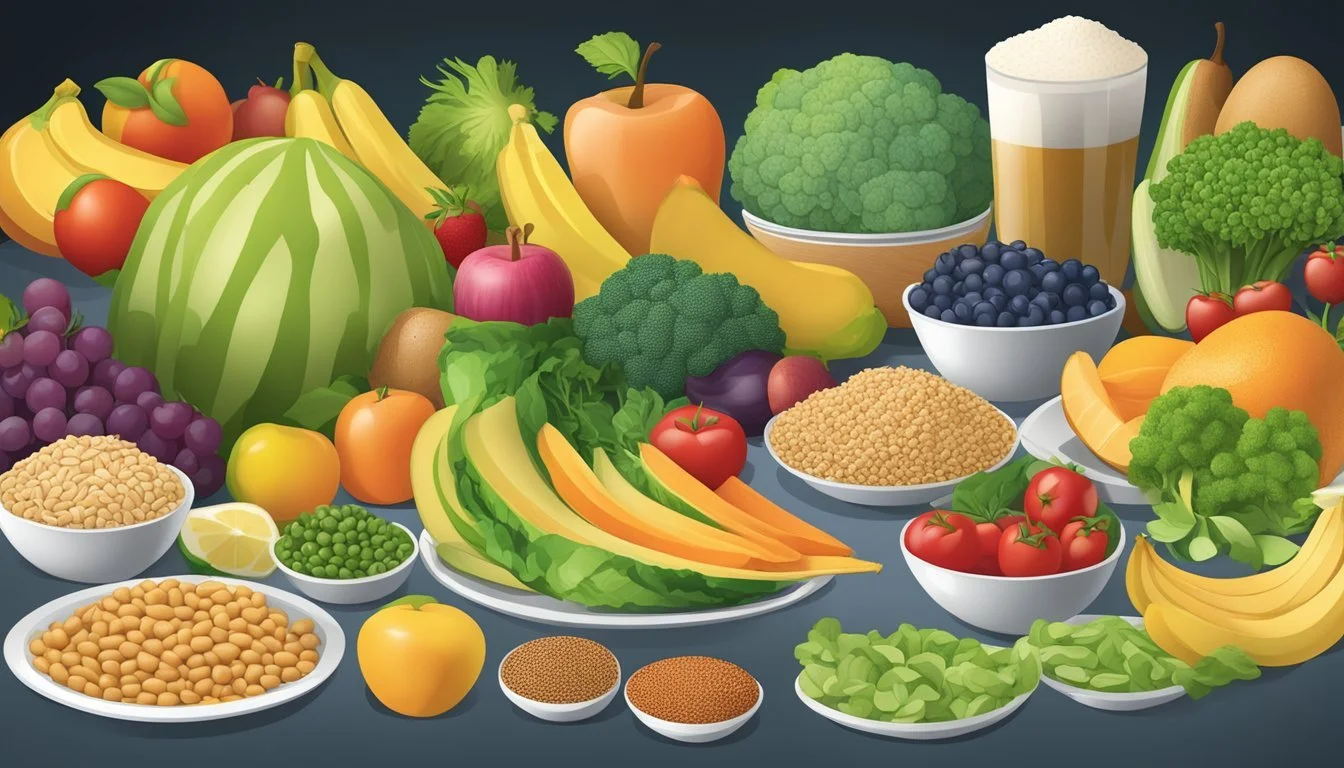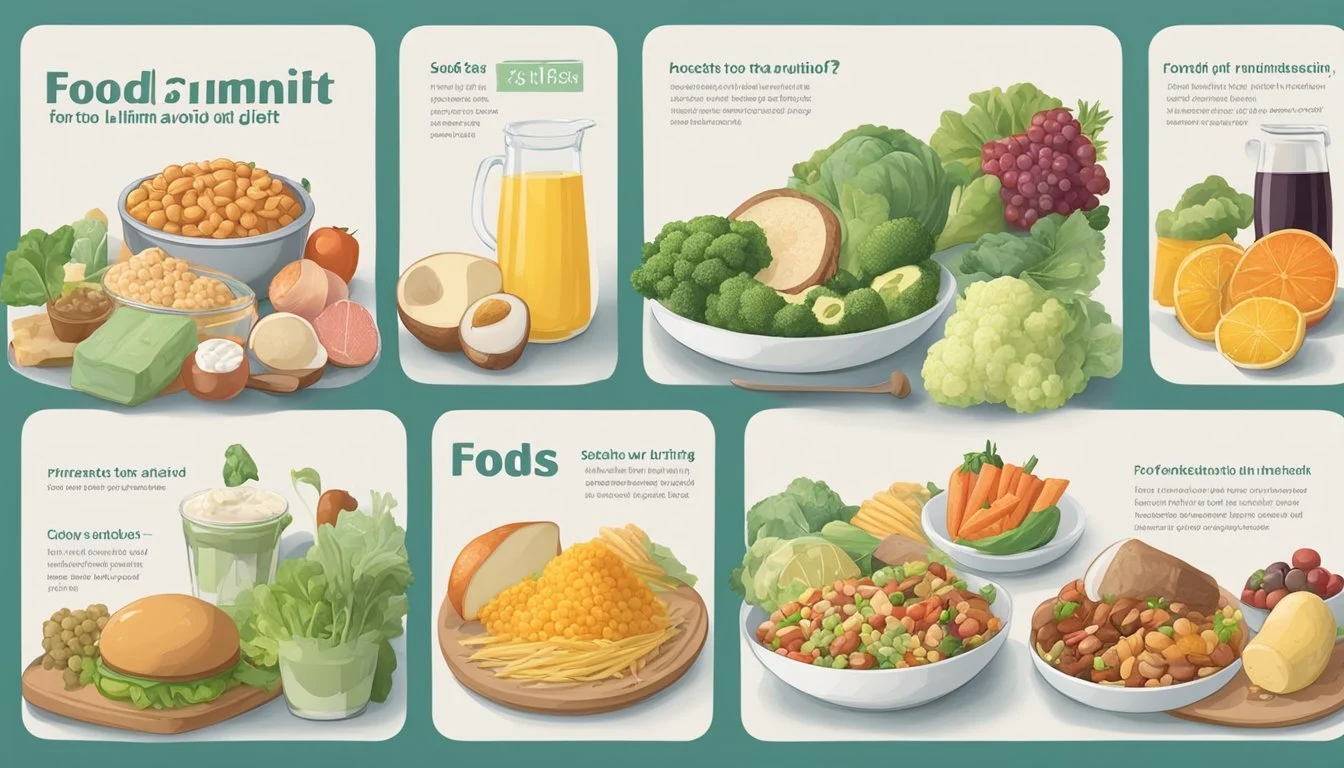Is it Safe to Follow the Volumetrics Diet During Pregnancy?
Understanding Nutritional Balance
When considering dietary choices during pregnancy, the safety and nutritional adequacy for both the mother and the developing fetus are paramount. The Volumetrics diet, which emphasizes eating foods with low energy density such as fruits, vegetables, and soups, aims to promote satiety and weight management. Unlike many diets designed for short-term weight loss, the Volumetrics approach is intended as a sustainable eating plan, which may make it a candidate for a healthy lifestyle change during pregnancy.
However, pregnancy is a period with increased nutritional demands, and the Volumetrics diet's compatibility with these unique requirements must be carefully evaluated. It is essential that pregnant individuals receive adequate calories, vitamins, and minerals to support fetal development. Any dietary plan during this time must not only contribute to healthy weight management for the expectant mother but also ensure that critical nutrients, such as folic acid, iron, and calcium, are present in sufficient quantities to foster optimal fetal growth and maternal health.
Understanding the Volumetrics Diet
The Volumetrics Diet emphasizes eating foods with low energy density but high in nutrients, aiming for sustainable weight loss and a healthier eating pattern.
Principles of the Volumetrics Diet
The core idea of the Volumetrics Diet is to consume foods that provide a greater volume with fewer calories, allowing one to feel full without consuming a large number of calories. Foods to focus on in this diet are typically high in water, fiber, and nutrients but low in energy density. This approach encourages healthy eating by incorporating:
Fruits and Vegetables: High in fiber and water, they are central to this diet.
Whole Grains: These provide essential carbohydrates and nutrients.
Lean Proteins: Important for muscle maintenance and satiety.
Healthy Fats: These should be included but in moderation due to higher calorie content.
The Volumetrics approach also involves portion control and an understanding of the calorie content in foods, aiming for a balanced ratio of carbohydrates, proteins, and fats within a low-calorie framework.
Volumetrics Diet and Pregnancy
During pregnancy, nutritional needs change, and it’s crucial for health outcomes that these needs are met. A diet like Volumetrics can potentially be tailored to support a healthy pregnancy by focusing on nutrient-dense foods which provide the necessary vitamins, minerals, and energy. However, it is important to adjust the diet to include:
Adequate calories: While lowering calories can be beneficial for weight loss, during pregnancy, caloric needs increase.
Essential nutrients: Folic acid, iron, calcium, and omega-3 fatty acids are among the nutrients particularly important during pregnancy.
Proteins: Critical for the growth and development of the baby.
It's recommended to consult a healthcare provider to personalize dietary plans during pregnancy, ensuring both the mother's and the baby's nutritional needs are met without compromising health or development.
Nutritional Considerations During Pregnancy
During pregnancy, it is crucial for women to focus on consuming a balanced diet rich in both macronutrients and micronutrients to support the growth and development of the fetus and maintain the mother's health.
Macronutrients and Micronutrients
A pregnant woman's diet must include an appropriate balance of macronutrients—proteins, carbohydrates, and fats—which are vital for energy and the building blocks of fetal development. Proteins are essential for the growth of fetal tissue, including the brain, and for the expansion of the mother's uterine and breast tissue. Good sources include lean meats, tofu, and legumes. Carbohydrates should come from whole grains, fruits, and vegetables to provide energy and dietary fiber. Healthy fats, particularly omega-3 fatty acids, are important for fetal brain development and can be found in fish and flaxseed.
Micronutrients—vitamins and minerals—are required in smaller quantities, but they play a critical role in ensuring healthy pregnancy outcomes. Key nutrients include:
Folic Acid (Folate): Crucial for preventing neural tube defects, recommended at 400–800 mcg/day.
Iron: Vital for the production of hemoglobin, preventing anemia; recommended at 27 mg/day.
Calcium: Supports fetal bone development; recommended at 1000 mg/day.
Vitamin D: Assists in calcium absorption and bone health; recommended at 600 IU/day.
The Role of Prenatal Vitamins
Prenatal vitamins are designed to complement a pregnant woman's diet. They provide a safety net by ensuring the provision of key nutrients that might be missed in the diet. A standard prenatal vitamin should contain:
Folate: To reduce the risk of neural tube defects.
Iron: To support increased blood volume and prevent anemia.
Calcium and Vitamin D: To aid in healthy skeletal development.
Prenatal vitamins may also contain other important nutrients such as iodine, vital for thyroid function, and vitamin B12, essential for neurological function. It is generally recommended for women to start taking prenatal vitamins before conception and continue throughout pregnancy. However, prenatal vitamin needs can vary, so it is important for women to consult with a healthcare provider to select the appropriate product.
Food Groups and the Volumetrics Diet
The Volumetrics Diet, designed to promote satiety with low-calorie, nutrient-dense foods, can be adapted during pregnancy to accommodate the increased nutrient needs. Food is categorized into groups by caloric density, encouraging the intake of plentiful fruits and vegetables and balanced amounts of protein, grains, and dairy.
Incorporating Fruits and Vegetables
Pregnant women can benefit greatly from the emphasis on fruits and vegetables within the Volumetrics Diet. These foods are low in calories but high in essential nutrients and fiber, which are important for fetal development and the mother's health. Broccoli and green leafy vegetables are excellent sources of vitamins A, C, and K, as well as fiber and folate, vital for preventing neural tube defects. Citrus fruits, like oranges, provide vitamin C, supporting the immune system and iron absorption.
Group 1: Low-calorie, high-volume options:
Non-starchy vegetables (e.g., lettuce, broccoli, cucumbers)
Most fruits (e.g., berries, apples)
Protein Sources for Pregnant Women
Adequate protein intake is crucial for the growth of fetal tissue, including the brain, and the expansion of maternal blood volume. The Volumetrics Diet allows for lean proteins to be consumed which includes poultry, lean beef, and seafood. Pregnant women are advised to choose low-mercury fish and properly cooked seafood to minimize risk. Beans, peas, and legumes are also excellent protein sources with the added benefits of fiber and iron.
Group 2: Low-calorie yet slightly higher in density than group 1:
Lower-fat meats (e.g., chicken, turkey)
Legumes (e.g., beans, lentils)
Grains and Dairy in a Balanced Diet
For energy and key nutrients like calcium and vitamin D, whole grains and dairy are an integral part of the Volumetrics Diet and pregnancy nutrition. Whole grains, such as brown rice and whole wheat bread, provide essential fiber and nutrients like B vitamins. Dairy products, including milk, cheese, and yogurt, supply calcium and may often be fortified with vitamin D, which supports bone health for both mother and child.
Group 2 (continued):
Grains (e.g., whole grain bread, brown rice)
Skim or low-fat dairy products (e.g., milk, yogurt)
Potential Benefits and Risks
When considering the Volumetrics diet during pregnancy, one needs to weigh the potential benefits, such as weight management, against any risks to fetal development due to changes in the mother’s diet.
Weight Management During Pregnancy
The Volumetrics diet focuses on consuming low-calorie, nutrient-dense foods, which can assist in maintaining a healthy weight gain during pregnancy. Healthcare professionals often emphasize the importance of avoiding excessive weight gain, as it can lead to complications such as gestational diabetes and hypertension. By adhering to the Dietary Guidelines for Americans, which promote healthy eating, pregnant women may find the Volumetrics approach beneficial. This diet encourages fruits, vegetables, and other foods high in water and fiber content that provide volume without excessive calories.
Volumetrics Diet and Fetal Development
Nutrient-dense foods are a cornerstone of the Volumetrics diet, which can potentially support proper fetal development. A diet rich in a variety of nutrients is critical to the developing nervous system of the fetus. However, it's crucial to ensure that the caloric intake is adequate to meet the increased energy and nutritional demands during pregnancy. Safe dietary practices recommend consulting with healthcare providers before any dietary changes to ensure that both the mother's and the fetus's needs are met.
Foods to Limit or Avoid
In navigating the Volumetrics diet during pregnancy, certain foods should be limited or avoided to reduce risks of foodborne illnesses and ensure both maternal and fetal safety.
Understanding Food Safety Concerns
Foodborne illness is a significant concern during pregnancy because it poses health risks to both the mother and the developing fetus. Pregnant individuals are particularly vulnerable to certain pathogens like Listeria, which can lead to serious complications. It’s also critical to be mindful of mercury levels in certain fish, as excessive mercury can affect fetal neurological development.
Specific Foods to Avoid
Alcohol: Completely avoid alcohol as it poses a risk of fetal alcohol spectrum disorders.
High-Mercury Fish: Limit intake of sardines, herring, and other high-mercury fish. Opt for cooked seafood over sushi to safeguard against parasites and bacteria.
Avoid Prefer Shark Salmon Swordfish Cod King Mackerel Shrimp
Raw or Undercooked Meats: To prevent Listeria contamination, avoid raw or undercooked pork, lamb, and hot dogs. Ensure all meats are cooked to safe internal temperatures.
Soft Cheeses: Soft cheeses like feta, brie, and others made from unpasteurized milk can harbor Listeria. Opt for hard cheeses or pasteurized varieties.
Meat Spreads: Refrigerated pâtés or meat spreads can also be a source of Listeria and should be avoided.
Liver: High in vitamin A, excessive consumption of liver can lead to vitamin A toxicity, which can be harmful during pregnancy.
Caffeine: Moderate intake is typically considered safe, but it is wise to limit caffeine consumption, including foods and beverages that contain it.
Lifestyle Considerations
Adopting the Volumetrics diet during pregnancy involves more than just food choices; it includes an awareness of overall lifestyle habits. Exercise, supplements, and various supports play a crucial role in maintaining maternal and fetal health.
Exercise and Physical Activity
Pregnancy warrants regular physical activity, which can alleviate discomforts like constipation and contribute to strong bones. Experts suggest moderate-intensity activities such as walking or swimming for most pregnant individuals unless contraindicated by healthcare professionals. It's essential to tailor exercise routines based on one’s current fitness level and to modify as pregnancy progresses.
Frequency: Aim for at least 150 minutes of moderate-intensity exercise per week.
Type: Include aerobic and muscle-strengthening activities.
Guidance: Consult a healthcare provider for personalized advice.
Supplements and Additional Support
While the Volumetrics diet focuses on nutrient-dense foods, pregnancy may require additional nutritional support. Supplements ensure the intake of essential nutrients like folic acid, which is critical for fetal development. Vitamin C is another key nutrient that supports both maternal and fetal health. Pregnant individuals should consider prenatal vitamins but only under the guidance of their healthcare provider.
Prenatal Vitamins: Typically include folic acid, iron, calcium, and DHA.
Additional Resources: A pregnancy due date calculator and other tools can assist in monitoring nutrition and fitness goals.
Breastfeeding mothers may require continued nutritional support postpartum. Health experts can provide comprehensive resources and supplemental guidance to nurture both mother and child.
Dietary Planning and Tips
In pregnancy, a woman's nutritional needs increase, necessitating a careful approach to dietary planning. The Volumetrics diet, focusing on low-calorie density foods, can help meet these needs while promoting healthy eating.
Meal Planning for Expectant Mothers
For expectant mothers, meal planning should balance nutrient-dense foods with adequate caloric intake to support both the mother's and baby's health. It should include:
Plant-based foods: A variety of fruits, vegetables, and whole grains to provide essential vitamins and fiber.
Protein sources: Lean meats, beans, and legumes to support fetal development.
Starchy vegetables: Such as sweet potatoes and corn, to supply energy.
Portion control is key, as overeating healthy foods can still lead to excessive weight gain. Meals should be regular to maintain a steady supply of nutrients.
Hydration and Fluid Intake
Hydration is crucial during pregnancy, but expectant mothers should choose their beverages wisely:
Water: At least 8-10 glasses per day to maintain hydration.
Juices: Opt for whole fruit over juice to limit sugar intake and maximize fiber.
Soup and broth: Low-sodium options are hydrating and comforting.
Skim milk: Provides calcium without high fat content.
Fluid intake is integral to supporting amniotic fluid levels and reducing the risk of urinary tract infections, which are common in pregnancy.
Conclusion
The Volumetrics diet emphasizes healthy eating by promoting foods that are low in calories but high in volume to create a sense of fullness without overconsumption. While it is tailored for weight management in the general population, its principles align with good nutrition and can be applicable during pregnancy, as long as the dietary plan includes nutrient-dense options essential for maternal and fetal health.
During pregnancy, the body's nutritional demands increase. The Volumetrics diet, which allows for all types of food, can be adapted to meet these needs. Pregnant individuals should ensure their diet includes:
Sufficient protein: Essential for fetal development.
Increased folic acid: Crucial for preventing neural tube defects.
A balance of vitamins and minerals: To support the growing fetus and maternal health.
It is vital to have a diet rich in fruits, vegetables, whole grains, and lean proteins while avoiding overly processed and high-fat foods. The Volumetrics diet supports this by advocating for meals abundant in vegetables and fruits, which are naturally lower in calories yet rich in nutrients.
Consultation with a healthcare provider is important when adjusting one's diet in pregnancy. They can provide personalized recommendations to ensure both the mother's and the baby's nutritional needs are met, potentially enhancing the benefits of following a diet like Volumetrics during this critical time.









